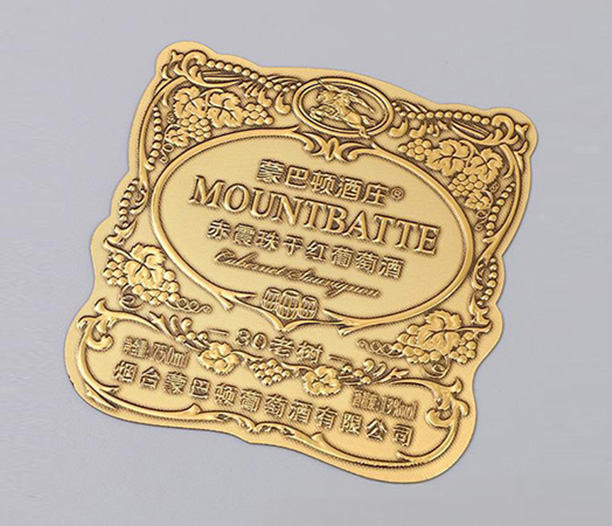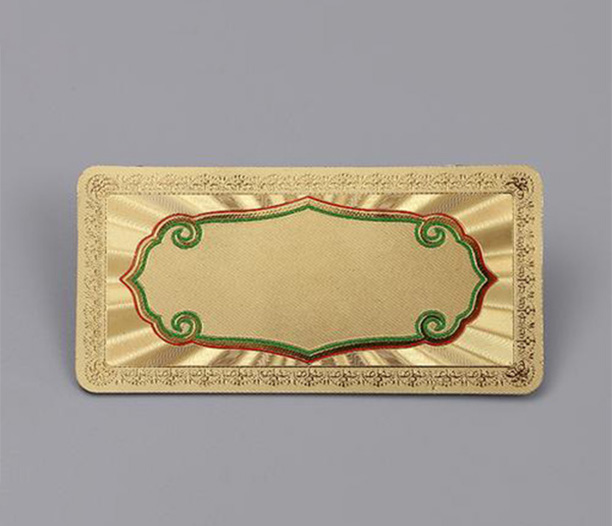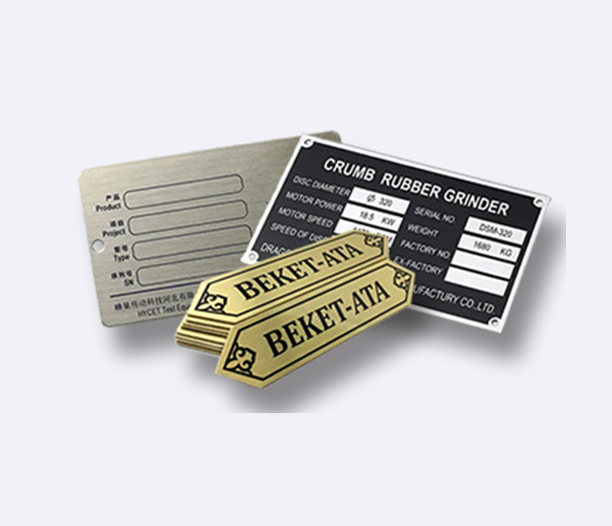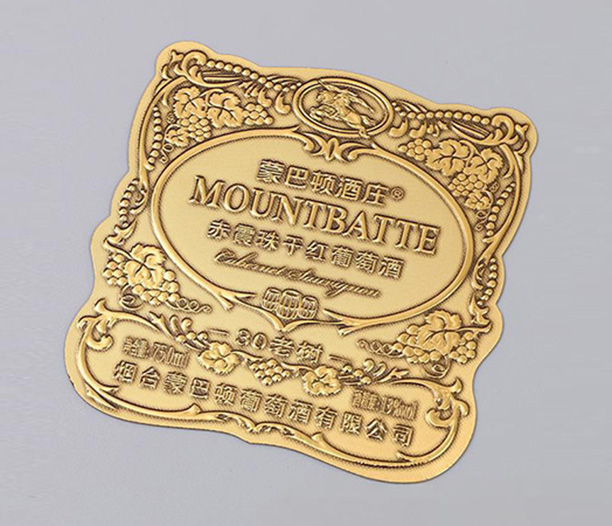Hey there! So, you've invested in some slick Aluminum Nameplates for your equipment, products, or facility branding. Smart move! These things are seriously tough – they resist corrosion, handle weather like champs, and just look darn professional. But even the toughest soldiers need a little TLC to stay in top shape. Just like you wouldn't ignore your car's oil change, giving your Aluminum Nameplate some basic care ensures it keeps looking sharp, communicating clearly, and representing your brand perfectly for years and years. Let's dive into seven easy but super effective tips to make that happen.
1. Gentle is the Name of the Game: Cleaning Without the Carnage
This is rule numero uno: Be Kind! Aluminum is hardy, but its surface can be scratched, especially if it has a brushed or anodized finish. Here’s your gentle cleaning toolkit:

- The Right Stuff: Ditch the harsh chemicals and abrasive pads. Grab a bucket of lukewarm water and a few drops of mild dish soap (think Dawn or Joy) or a dedicated aluminum cleaner. Seriously, the stuff under your kitchen sink is often perfect.
- Soft Touch Tools: Use a super soft cloth – microfiber is your absolute best friend here. Sponges are okay if they're the soft, non-scratchy kind. Old cotton t-shirts work in a pinch too. Avoid stiff-bristled brushes, steel wool (yikes!), or rough paper towels like the plague.
- Technique: Dip your soft cloth/sponge in the soapy water, wring it out really well (you want it damp, not dripping wet). Gently wipe down the Aluminum Nameplate surface. For stubborn dirt or grime (like built-up grease or sap), let the soapy solution sit on the spot for a minute or two to loosen it up before gently wiping again. No need for heavy elbow grease!
- Rinse & Dry: Follow up by wiping with a clean cloth dampened with plain water to remove any soap residue. Then, immediately dry the plate thoroughly with another clean, soft, lint-free cloth. Water spots are annoying and letting water sit can sometimes lead to minor staining, especially on uncoated aluminum. This simple routine is the backbone of Aluminum Nameplate longevity.
2. Chemical Warfare? Just Say NO!
Okay, maybe "warfare" is a bit dramatic, but seriously, some common cleaners are kryptonite to aluminum. You might be tempted to grab that powerful degreaser or bathroom cleaner when things get messy. Resist the urge! Here’s the lowdown:
- Acid Attack: Cleaners containing hydrochloric, sulfuric, phosphoric, or other strong acids (like many toilet bowl cleaners, rust removers, or concrete cleaners) are absolute no-gos. They can etch the surface, causing permanent dullness, pitting, or discoloration. Ouch.
- Alkali Aggression: On the flip side, super strong alkaline cleaners (like heavy-duty oven cleaners or some industrial degreasers with high pH) can also damage the surface or any protective coatings.
- Chlorine Concerns: While diluted bleach solutions can be used sparingly for disinfection on some coated plates (always test first!), it's risky. Chlorine can cause pitting or white corrosion spots over time, especially if not rinsed incredibly thoroughly. Best avoided unless absolutely necessary and approved by the nameplate manufacturer.
- The Golden Rule: Stick to pH-neutral cleaners. That mild dish soap? Perfect. Dedicated aluminum cleaners? Great. When in doubt, test an inconspicuous area first or just stick with the basics.
3. Scraping & Scrubbing: The Fast Track to Ugly
We get it. Sometimes stuff gets stuck on there – paint overspray, adhesive residue, chewing gum (seriously, how does that even happen?), or baked-on grime. Your instinct might be to grab a razor blade, a putty knife, or a wire brush. Hold it right there!
- Sharp Objects = Scratches: Metal scrapers, even plastic ones with hard edges, will almost certainly scratch the surface of your Aluminum Nameplate. Once scratched, that finish is compromised. It looks bad and can even make the plate more susceptible to corrosion in that spot.
- Abrasive Nightmares: Steel wool, abrasive cleaning pads (like the green or blue Scotch-Brite types, even if they say "non-scratch"), or harsh powders (like Comet) are designed to scour. They will leave fine scratches or swirl marks all over your nice, smooth plate.
- The Gentle Removal Strategy: For sticky stuff, try applying a little isopropyl alcohol (rubbing alcohol) or a mild solvent like Goo Gone to a soft cloth and gently rubbing. WD-40 can sometimes work too. Apply, let it sit briefly to soften the gunk, then gently wipe away with the damp soapy cloth. Patience is key! For paint, consult the manufacturer – sometimes specialized, gentle paint removers formulated for aluminum might be safe, but testing is crucial.
4. Mother Nature: Friend or Foe? (Mostly Friend, But...)
One of the biggest perks of an Aluminum Nameplate is its weather resistance. Rain, snow, sun? Usually no problemo. But, extreme environments need a little extra consideration:
- Salt Spray Savvy: If your plates are near the ocean or on equipment used where road salt is common (hello, snowplows!), salt spray is a real concern. While aluminum naturally resists corrosion, salt is super corrosive. Increase your cleaning frequency in these areas – maybe monthly or even bi-weekly during heavy salt exposure. Use the gentle soapy water wash and thorough rinse to remove salt deposits before they can cause white corrosion or pitting. Pay special attention to edges and any crevices.
- Industrial Atmosphere Awareness: Factories, chemical plants, or areas with high pollution can expose plates to airborne acids or other corrosive chemicals. Again, more frequent gentle cleaning is your best defense to remove these contaminants before they react with the surface.
- Sunshine State?: Direct, intense, constant sunlight (think Arizona desert or Florida sun) is tough on everything. While aluminum itself handles UV fine, any colored inks or coatings might experience very gradual fading over many, many years. Choosing high-quality UV-stable inks during manufacturing is the best prevention. Cleaning helps remove dirt that could potentially accelerate any minimal fading. Regular inspection lets you spot any issues early.
5. Don't Ignore the Mount: Keeping Things Secure
An Aluminum Nameplate flapping in the breeze or falling off completely isn't just ineffective; it looks sloppy and can even be a safety hazard. Security matters!
- Regular Check-Ups: Make it a habit to visually inspect how your nameplates are attached. Are all the rivets, screws, or bolts still tight and present? Is the adhesive (if used) still holding strong without peeling edges?
- Tighten Up: If you see a loose screw or rivet, carefully tighten it. Don't overtighten, as you could strip threads or distort the plate. Just snug it up.
- Adhesive Alert: If an adhesive-backed plate starts lifting at the corners, don't just press it back down – dirt gets trapped and it won't hold. Carefully lift it (if possible), clean both the plate backing and the mounting surface thoroughly with isopropyl alcohol, let it dry completely, and then apply a strong, fresh, outdoor-rated double-sided tape (like 3M VHB) to re-secure it. Sometimes, mechanical fasteners (rivets/screws) are a better long-term solution for critical locations.
- Preventative Care: When installing new plates, ensure the mounting surface is clean, dry, and smooth. Use the appropriate fasteners or high-quality adhesive rated for the environment (temperature, moisture). A well-mounted Aluminum Nameplate is a happy, long-lasting plate.

6. Fighting the Green Gunk: Dealing with Oxidation & Corrosion
Even with the best care, aluminum exposed to the elements can sometimes develop a white powdery substance or minor surface corrosion. Don't panic! It's usually superficial and fixable if caught early.
- Spotting It: Keep an eye out for dull, chalky white patches, especially along edges, around fasteners, or in crevices where moisture might linger. This is aluminum oxide – it's actually a protective layer, but it doesn't look great.
- Gentle Removal: For light oxidation, often your regular gentle cleaning routine (soapy water, soft cloth) will remove it. If it persists, try a paste made from baking soda and water. Apply it with a soft cloth, rub very gently in the direction of any grain (like on brushed aluminum), rinse thoroughly, and dry immediately. You can also find commercial aluminum oxidation removers (like Flitz or Mothers) – always test first!
- Avoid Aggressive Polishes: Don't use heavy-duty metal polishes designed for brass or copper, as they can be too abrasive for nameplate finishes or remove protective coatings.
- Anodized Advantage: If your Aluminum Nameplate is anodized (has that hard, colored, protective coating), it's much more resistant to corrosion. Cleaning with mild soap and water is usually all it needs. Anodizing is a fantastic upgrade for harsh environments.
7. Storage Smarts: Protecting Plates Before They Shine
Maybe you have spare Aluminum Nameplates waiting for future use, or you've removed one for some reason. Don't just toss them in a drawer or damp basement corner! Proper storage prevents problems before the plate even gets mounted.
- Clean & Dry is Crucial: Before storing any Aluminum Nameplate, give it that gentle soapy water wash, thorough rinse, and complete dry. Trapped dirt or moisture during storage is asking for trouble like staining or corrosion.
- Keep 'Em Separated: Store plates flat and separated. Stacking them directly on top of each other, especially if they have raised lettering or embossing, can cause scratches or dents. Use cardboard dividers, tissue paper, or individual plastic sleeves/bags.
- Climate Control (If Possible): Store them in a cool, dry place. Avoid attics (super hot) or basements (damp/humid). Extreme temperature swings or constant high humidity aren't ideal buddies for long-term storage. A climate-controlled office or warehouse area is best.
- Bag It (Optional but Smart): For long-term storage or in less-than-ideal environments, slip each clean, dry plate into an individual resealable plastic bag (polyethylene is good). You can even toss in a small desiccant packet to absorb any residual moisture. This creates a mini protective environment.
Wrapping It Up: Your Aluminum Ally Deserves the Best!
Look, maintaining your Aluminum Nameplate isn't rocket science. It boils down to common sense and a little routine care. Remember the golden rules: Gentle cleaning with the right tools, avoiding harsh chemicals and abrasives like they're the plague, being mindful of extreme environments, keeping things securely mounted, tackling minor corrosion early and gently, and storing spares properly. By following these seven simple tips, you're guaranteeing that your Aluminum Nameplates will continue to look professional, legible, and sharp – effectively doing their job of branding, informing, warning, or identifying for a seriously long time. It’s a small effort for a big payoff in appearance, durability, and protecting your investment. Now go give those plates some love! Got any specific nameplate challenges? Feel free to ask!






